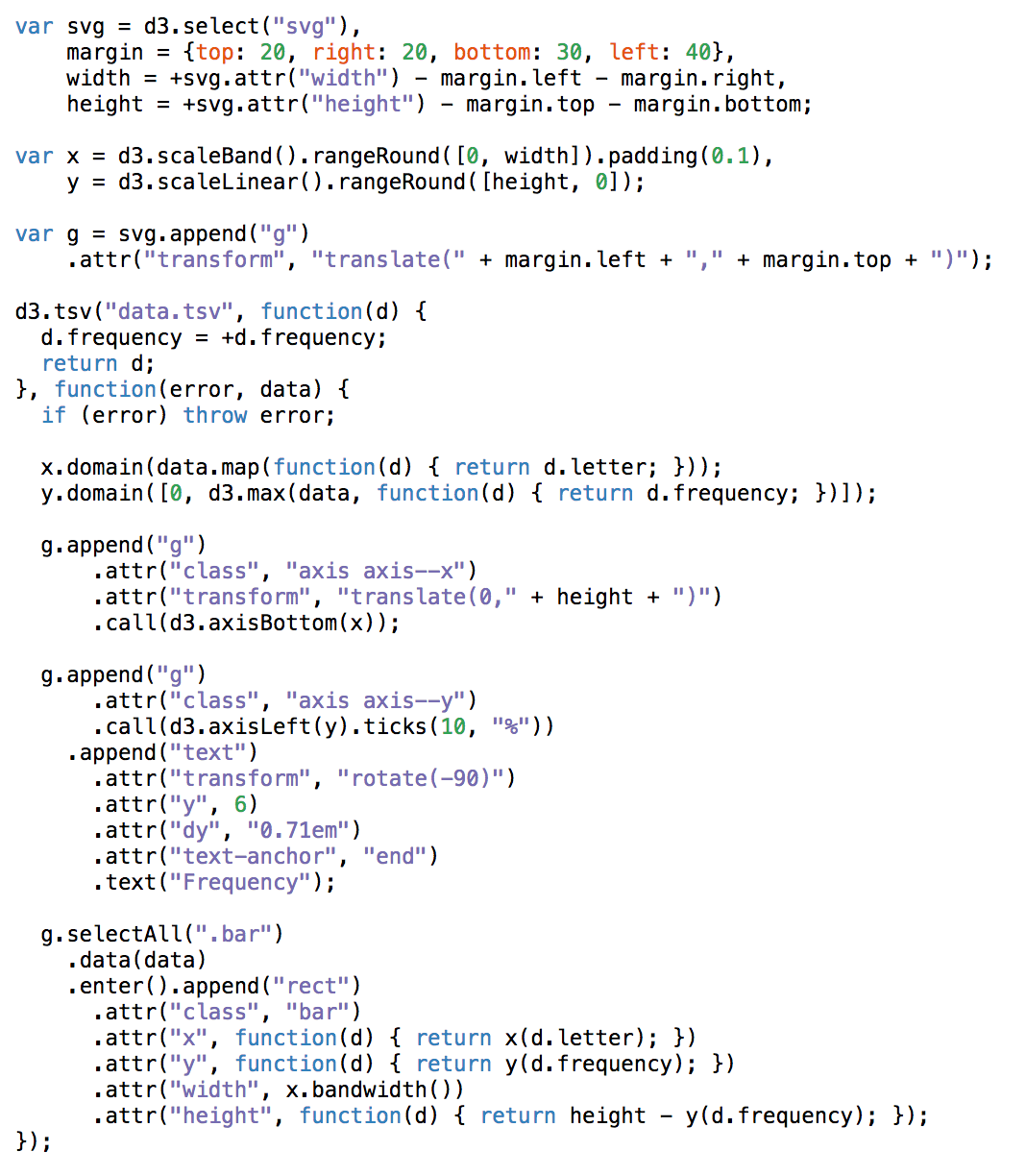Who am I¶
- My name is Zoë Farmer
- CU graduate with a BS in Applied Math and a CS Minor
- I'm a co-coordinator of the Boulder Python Meetup
- I'm a big fan of open source software
- http://www.dataleek.io
- @TheDataLeek, github.com/thedataleek, gitlab.com/thedataleek
- D3 Data Visualizer at Talus Analytics - http://www.talusanalytics.com
What's the problem?¶
- D3 doesn't have the popularity of Node, Angular, Python,
<insert popular framework here>, etc. - Documentation can be sparse.
- Most of us (myself included) learn from terse bl.ocks.org demos.
- Because of this, most D3 code tends to be write-only.
TL;DR -- D3 doesn't lend itself to reuse¶
Example - Scatterplot¶

So what can we do?¶
- Use classes
- Separate interaction from drawing
- Write with reuse in mind
Use Classes¶
class Chart {
constructor(selector, params={}) {
this.selector = selector;
this.svg = d3.select(selector).append('svg');
this.chart = this.svg.append('g').classed('chart', true);
this.params = params;
}
newGroup(name) {
if (this[name]) { this[name].remove() }
this[name] = this.chart.append('g').classed(name, true);
}
}
class Bar extends Chart { ... }
Separate Interaction¶
- Add invisible clickable elements
- You can make them bigger than your data
- Helpful for small elements
- Intuitive for user
- Don't need to worry (for the most part) about binding interactions to elements
Write with reuse in mind¶
- Most charts share 75% of their code with something you've probably already done.
- Use similar (preferably the same) data format for each method
- Write generic methods that you can reuse
class Bar extends Chart {
...
drawBars(data) {
this.newGroup('bars');
this.bars
.selectAll('rect')
.data(data)
.enter()
.append('rect')
.attr('transform', d => `translate(${this.xScale(d.key)})`)
.attr('width', this.xScale.bandwidth())
.attr('height', d => this.yScale(d.value))
.attr('fill', d => d.properties.fill)....
}
...
}
Takehome¶
- Use classes
- Separate interaction from drawing
- Write with reuse in mind
It's more work up front for each chart, but it will pay dividends.
In [ ]:
